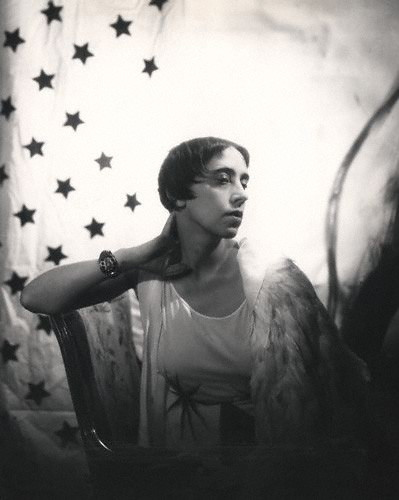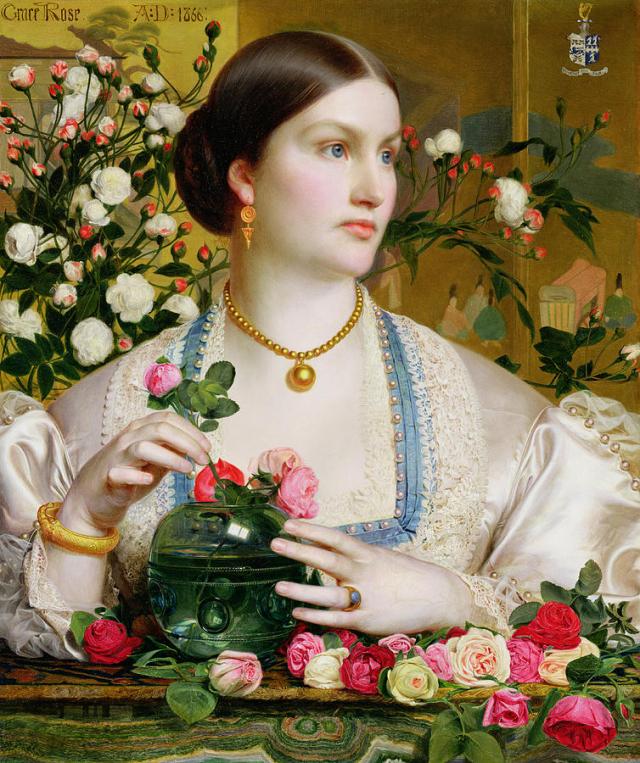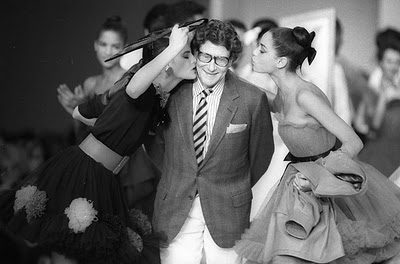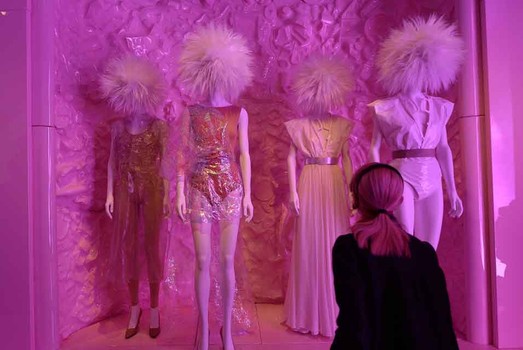
Hagar Cygler with Hannah
I am very excited to share a conversation I had over email with Hagar Cygler, a talented, young, Israeli artist. Cygler recently published a book which started with a visit to the flea market; she was looking for photographs she could cut and experiment as preparation for a project she was working on. In the photographs she bought that day, a women kept showing up. Cygler was intrigued by this woman who captured her imagination and sent her on a detective-like chase. The result is a fascinating project that examines our hyper-documented present by looking at the past.
Keren Ben-Horin: Hello Hagar, congratulations on the new book. It must be very exciting.
Hagar Cygler: Hay Keren. It is very exciting. I have been waiting for this for a long time.
KBH: tell us a little bit about yourself. What is your background and what you do when you are not chasing anonymous women from the 1980s?
 HC: Well, I live and work in Tel-Aviv, Israel. I earned my BA in photography from Bezalel Academy of Arts and Design in Jerusalem, but as soon as I graduated I realized I am not going to be a photographer. I do have a studio where I mostly shoot for exhibition catalogs and for other artists. I use my studio for my art which, for the most part, is not photography. I do crafted work that almost always uses photographs as a starting point. Some of the photos are of my own family, or people would give them to me or I’ll scout flea markets. I’m also working on an archive for Batsheva Dance Company. It’s a fascinating project that allows me to continue and work with my favorite material- old photographs.
HC: Well, I live and work in Tel-Aviv, Israel. I earned my BA in photography from Bezalel Academy of Arts and Design in Jerusalem, but as soon as I graduated I realized I am not going to be a photographer. I do have a studio where I mostly shoot for exhibition catalogs and for other artists. I use my studio for my art which, for the most part, is not photography. I do crafted work that almost always uses photographs as a starting point. Some of the photos are of my own family, or people would give them to me or I’ll scout flea markets. I’m also working on an archive for Batsheva Dance Company. It’s a fascinating project that allows me to continue and work with my favorite material- old photographs.
KBH: How did you get to Hana?
HC: I met her by chance. I was invited to be a part of the last ceramics biennale in the Eretz Israel museum in Tel-Aviv. I needed a large amount of photographs for the object I was making. I stopped by the flea market in Jaffa and bought a random pile of photo albums. When I started going through them I realized they belonged to the same family and I took out the photos I liked. At some point I started to see a repeating pattern of composition in some of the photos- these are the photos of Hannah standing at the hallway of her apartment and modeling a different outfit every time.

KBH: Tell us a bit about the blog
HC: Hannah’s photos looked so much like the fashion blogs I follow and I thought for sure, if she could, she would have had a blog like that. So I did it for her. I opened a blog called same place, same haircut, different outfit. Every day I posted a new picture.
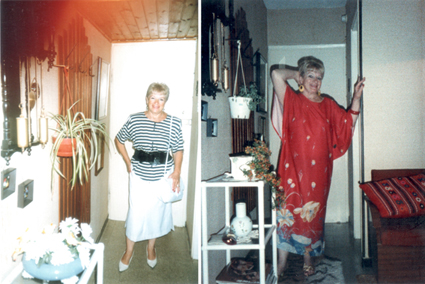
KBH: You had 46 photos of Hannah in the same place and position. What happened after you posted all 46 pictures?
HC: The reaction was great, people got really excited and started asking questions about her I didn’t really know to answer. When all 46 pictures were uploaded I felt I had to continue with the project, it felt like this has to be a book.
KBH: Why a book?
HC: There’s something about the medium of blogs that feels temporary. We scroll through quickly to consume more and more. The huge amount of data is distracting and doesn’t let us really submerge in what we see. A book is more permanent, repetitive. It doesn’t constantly change like a blog and you can always go back and re-look at images. After I experimented with the blog, I felt Hannah needed a permanent platform because I didn’t have more photographs to update the blog regularly.
KBH: How were you able to get the rights for the photographs?
HC: I assumed that because I found the photographs at the flea market, most chances Hannah was no longer alive and I was looking for her children or relatives to release the rights. I was looking for clues in the photographs which led me to a building in Herzeliya. One thing led to another, I remembered places I saw in the photos and somehow I found myself in Hannah’s old building talking to her neighbor who told me everything about her.
KBH: What did you find about Hannah?
HC: Hannah was a loving, charming woman who was in love with her husband until the day she died. She loved kids but did not have children of her own. She always bought chocolates and gifts to all the kids in the neighborhood. She was very warm and sweet. Her love of fashion was nurtured even in her native country Hungary, before she immigrated to Israel in the 1960s. She loved to splurge on clothes. The neighbor introduced me to Hannah’s relatives who released the rights and also told me more about Hannah and her husband.
KBH: What was people’s reaction to Hannah’s photographs?
HC: There is something heartwarming and charming about Hannah, anyone who shows interest in the pictures ends up falling in love with her. One of the most common reactions is of disbelieve that people throw away photographs. It always stirs a conversation about how we retain memory and the way we handle different objects in our lives.
KBH: What do you mean?
HC: We tend to capture memory through objects: mementos from places we traveled to, diaries, endless number of photographs. Even people living in a minimalist space would still leave things behind when they are gone. The work I did for the ceramic biennale was based on the experience of having to throw away my grandparents’ belongings after they passed. We gave away what we could, but there were still things we had no choice but to trash. I couldn’t bring myself to throw away a pile of photographs that my grandfather had taken. They had no visual value, but the fact that he took these made them valuable, and for me that was where the memory endured. The gap between the image and the material as indicator of memory intrigued me and resulted in a series of ceramic photographs.
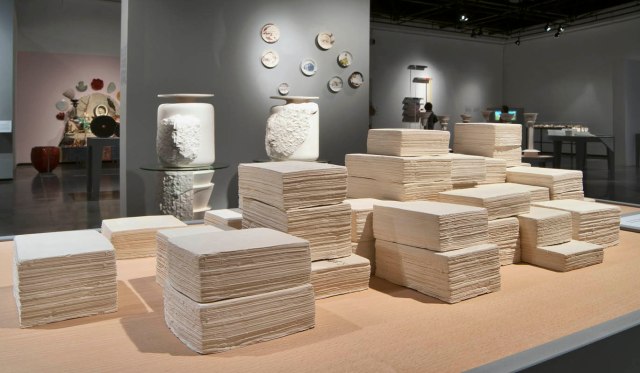
Cygler’s work at the Biennale for Israeli Ceramics. Photo : Leonid Padrul, © Eretz Israel Museum, Tel Aviv
KBH: Why do you think Hannah captured your imagination? What drew you to her personal history?
HC: Hannah is like sunshine on a rainy day. Every time I felt tired or depressed I looked at her pictures again and they made me happy. She is very authentic, not pretentious at all and she always makes me smile. At the beginning, I didn’t care much for her personal story. The research was really just to get the rights from the family. But after I learned about whom she was, it intensified all the emotions I had to begin with.

KBH: What can we draw from Hannah about how visuals are made and consumed today?
HC: Hannah’s photos are a fascinating mirror to the way we take pictures today. We feel that technological advances changed us. At the end of the day, we use the same tool to get to the same point. We shoot ourselves the same way, in the same places, and for the same purpose- to document a moment we want to remember. The fact that technology is faster and more accessible doesn’t change the way we pose in front of a camera, we still want to look our best.
KBH: What do you think changed in the 30 years since she took these pictures?
HC: In our culture everyone is taking pictures and sharing them instantly, we don’t have time to digest. The anticipation for the developed film, choosing which ones to print, putting pictures in an album, and giving out pictures to friends was a process that allowed us to scrutinize, to absorb. The culture has changed, it became more complicated. At the same time, Hannah’s life in retrospect might seem simpler but she is doing exactly what many other fashionable women are doing today.
KBH: Hannah’s husband is the silent, yet active partner, why do you think they took the photographs?
HC: That’s a great point of view. When I imagine the situation, I visualize Hana asking Yosef to take her picture just before they leave the house in the outfit she chose for the day. Pictures of hers in a house robe, make me think that it might have become their private joke. From the family I know that Hannah loved photographing and being photographed, she is very present in every picture. Yosef tends to slightly slant the camera or a sliver of his finger is visible, I think it’s charming. There’s love in the pictures, you can see it in Hannah’s gaze.

KBH: I absolutely love the ease and confidence of a woman with a body that doesn’t conform to fashion norms, and clothes that were probably not fashionable when they were worn. Yet she takes pleasure in dressing up and she is obviously admired by the eyes behind the lens.
HC: Indeed, there’s confidence and ease in front of the camera that stems from their relationship. As for the body image, you have to remember that 30 years passed, and although Hannah is not exactly a top model, I do think she could have been a Burda or hand-knitting catalog model- representing a “normal” body type. You also have to remember she lived in Israel in a time when fashion from Paris or New York arrived her in a delay of a few years. She was also a factory worker and her husband was a plumber, even if she wanted to spend more on fashionable clothes she probably wasn’t able to afford it.
KBH: Is the book sold in the US?
HC: It’s available online at my Etsy store and on the publisher’s website.

KBH: What’s next for you?
HC: I would love to rest. I am still collecting materials, people always come by with things they have found, I am sure something will start cooking in the studio soon.
KBH: Hagar, thank you for taking the time to share your work with us. Do you have any advice to young researchers of fashion history who want to publish their work?
HC: Thank you! Wow. I think mostly to work hard. If you believe what you have is good, don’t wait for someone to discover you. There are so many outlets today to get to a wide audience without mediators, so keep working and keep trying. If you think I can help or advise, I am always happy to help, shoot me an email.







